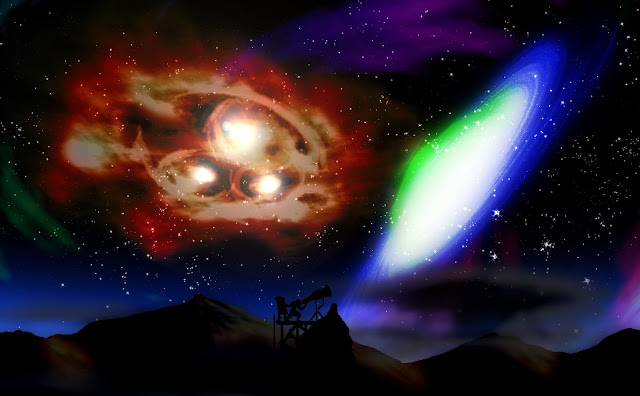Editorial 09/15/2014- Spinosaurus
Let's face it. Science isn't perfect. Every time we look into the cosmos, we get a glimpse of what is really out there, and we try to put into our perspective, but that only raises questions. Of course, finding out about its true nature only poses more, and often leads us two steps farther back than where we started. For evidence of this, I give you the humble Spinosaurus.
 |
| The classical look of a Spinosaurus which was only recently proven to be almost entirely wrong. |
Spinosaurus, or "Back-boned lizard" has been known since before World War One. Partial skeletons have been found in Egypt, but many of its bones were missing. For the sake of study and progress, scientists and everybody along with them thought that, as relatives of Tyrannosaurus and other carnivorous dinosaurs, it should have possessed similar bird-like features, such as a bipedal stance and arms tucked in towards the body. Almost every depiction from that in Jurassic Park III to Monsters Ressurected, however inaccurate they were otherwise, kept those with the sail and the crocodile-esque head.
Of course, the truth is much stranger. Recent findings show that it was even more unlike anything we've found so far. Its hind limbs were much shorter in comparison to its forelimbs, and its bone density was much higher. Last week, National Geographic released a full description, showing it more to be some strange, four-legged carnivore, which would definitely make it a first for a dinosaur. Since I haven't had enough time to prepare something decent for you, here's another artist's depiction.
| Paleoartist Luis V. Rey's depiction of something like the world's largest land carnivore. |
As you can see, the fifty-foot long dinosaur is nothing like what we've been drawing this whole time. Odds are, it would have spent most of its time in the water, coming to land only to rest, nest, or scavenge in times of need. The fact that its forearms couldn't rotate like a mammal's poses a challenge in posing, but it may have walked on its knuckles, in the way of a gorilla. Land life would have been very awkward for this carnivore, certainly not making it fit for combat with any other large carnivore in the area such as Charcaradontosaurus.
The question remains: what WAS it doing in the water? Other spinosaurids such as Suchomimus still maintained a strong, bipedal stance, only standing in the shallows, like a stork. In this case, it may be that the area in which it normally lived was starting to experience regular flooding, like a mangrove forest. Maintaining heat would have been much more of a necessity in that case, explaining the shortened limbs and the sail. Still, a total transition from land to sea is a bit of a stretch. Regardless, it happened.
Of course, the questions are still very numerous. Mine is: where was the Spinosaurus going with this? Is it possible that it was at the head of a lineage of undiscovered sea-dinosaurs. Sure, reptiles such as plesiosaurs had been seafaring for a hundred million years beforehand, and mososaurs were on the rise. It's not altogether unlikely, though, that this critter was on its way to the competition. We have yet to discover 20% of all prehistoric species, and we may never find the other 75%. It is possible and probable that an entire race of dinosaur-whales could have lived before the end, and we may never know it.
Not much of an opinion. It's just food for thought.
Resources from National Geographic, Luis V. Rey, and Th'Den Wheja.


Comments
Post a Comment
Thank you very much for your thoughts! If you have questions, we will attempt to reach back to you within the next few days.